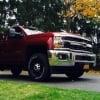If you only were going to be allowed one truck.....
-
Recently Browsing 0 members
- No registered users viewing this page.
-
Forum Statistics
247.7k
Total Topics2.6m
Total Posts -
Member Statistics
-
Who's Online 10 Members, 2 Anonymous, 2,251 Guests (See full list)

.thumb.jpg.e30131d8d4d07ca4356852c92a9a4caf.jpg)













Recommended Posts
Join the conversation
You can post now and register later. If you have an account, sign in now to post with your account.